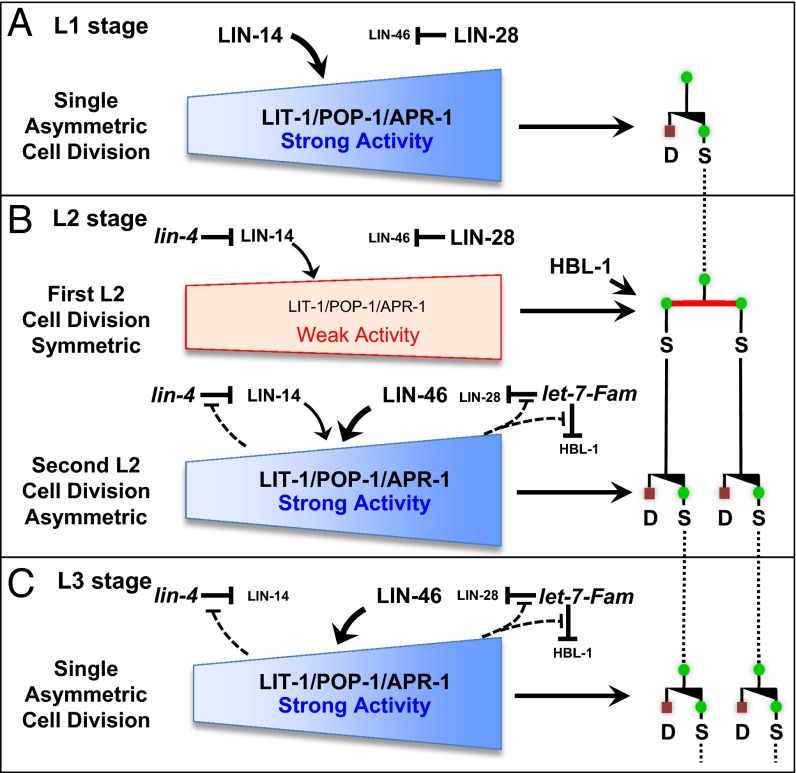Fig. 5.
A model of genetic interactions between heterochronic genes and LIT-1/POP-1/APR-1 in the developmental regulation of asymmetric and symmetric seam cell divisions. The stage-specific pattern of asymmetric and symmetric division of seam cells is orchestrated by parallel microRNA-regulated developmental timing pathways. (A) lin-14 acts in the L1 to enhance the activity of the LIT-1/POP-1/APR-1 polarity machinery and hence prevents early expression of the L2 symmetric seam cell division. (B) LIN-14 level is then partially down-regulated in the late L1 stage by the lin-4 microRNA, so that the early L2 symmetric division is permitted because of a below threshold level of LIN-14 together with a parallel activity of lin-28 that inhibits premature activation of lin-46. Our data tentatively place HBL-1 as acting independently of LIT-1/POP-1/APR-1 to promote the symmetric stem cell proliferative division. After the first L2 symmetric division, seam cells immediately switch back to asymmetric division because of the down-regulation of HBL-1 by the let-7-Fam microRNAs, as well as down-regulation of LIN-28, which permits the up-regulation of lin-46, and hence restoration of full LIT-1/POP-1/APR activity. Note that LIN-14 is understood to be partially down-regulated to a medium level in the L2 stage and to a lower level in the L3 (12), and our data from this study confirm that lin-14 activity contributes partially to regulating the activity of LIT-1/POP-1 in the second-L2 asymmetric division (Fig. 3D). The results of Ren and Zhang are incorporated into the model here by invoking feedback circuits wherein LIT-1/POP-1 asymmetry machinery confers robustness to the temporal dynamics of lin-4 and let-7-Fam microRNA activities by negatively modulating those microRNAs during the L2 and L3 stages (45).

